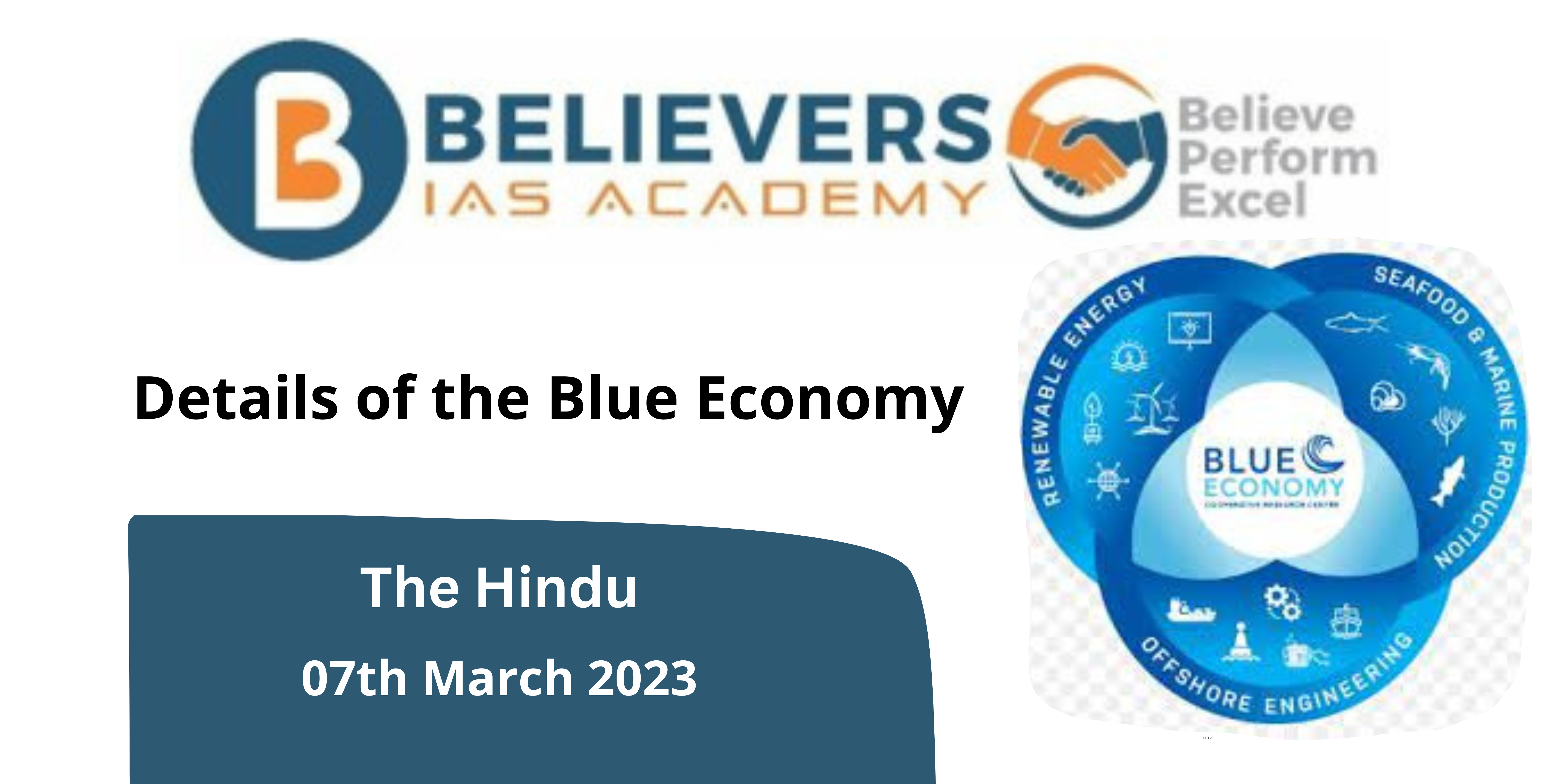Details of the Blue Economy:
#GS III #Indian Economy
Topic Indian Economy
Context:
- Bengaluru recently hosted a meeting of the G20 Environmental and Climate Sustainability Working Group. The three topics that came up the most during the Indian presidency were land degradation, the blue economy, and the circular economy. Ashish Chaturvedi, Chief of UNDP India’s Environment, Energy and Resilience Division, talked about the Blue Economy and its significance for the G20 summit in an interview with The Hindu.
The Blue Economy: What Is It?
- In his 2010 book “The Blue Economy: 10 years, 100 innovations, 100 million employment,” Gunter Pauli first put forth the idea.
- to promote greater housing options, employment opportunities, and economic growth, as well as the sustainability of the ocean’s environment.
- For greater productivity and the protection of ocean health, it promotes environmentally friendly ocean development practises.
- The Blue Economy hypothesis holds that social inclusiveness, environmental sustainability, and cutting-edge business ideas are all related to the expansion of the ocean economy.
- The utilisation of sustainable marine energy may considerably contribute in social and economic growth.
- Fisheries: Sustainable fisheries can increase revenue, increase the amount of fish produced, and aid in the rehabilitation of fish stocks.
- At least 80% of all traded items are transported by water.
- The economy can benefit and employment can be created via ocean and coastal tourism.
- As a carbon sink, oceans play a critical role in halting climate change (blue carbon).
- Waste Management: Better garbage collection on land may aid in the ocean’s recovery.
How does the blue economy function?
- High Return on Investment: According to a report commissioned by the high-level group for a sustainable ocean economy, one dollar spent in fundamental ocean activities returns five times that amount, or five dollars, and frequently more.
- Synergy with SDG: It promotes all of the Sustainable Development Goals (SDGs) of the United Nations, particularly SDG14, which is about “life below water”.
- Sustainable Energy: Offshore regions hold great promise for offshore wind, waves, ocean currents, including tidal currents, and thermal energy to address the growing need for renewable energy.
- Concerning India: 95% of the nation’s transportation-related businesses are supported by the blue economy, which is expected to generate 4% of India’s GDP. Nine coastal states make up the country’s 7,500 km of coastline, which has 12 major and 200 minor ports (GDP).
What initiatives are implemented to advance the blue economy?
- The Deep Ocean Mission was launched with the goal of creating technology to utilise both living and non-living materials found in the deep ocean.
- The India-Norway Task Group on Blue Economy for Sustainable Development was established in 2020 with the goal of establishing and maintaining bilateral projects between the two nations.
- The Sagarmala Initiative, a strategy for port-led growth, primarily focuses on IT-enabled services to modernise ports.
- O-SMART: India established the O-SMART umbrella effort to regulate the use of the oceans and marine resources for sustainable development.
- The goal of integrated coastal zone management is to improve the chances of coastal populations finding work while preserving marine and coastal resources.
- National Fisheries Policy: The “Blue Growth Initiative,” which is focused on the sustainable extraction of fisheries wealth from marine and other aquatic resources, is promoted by India’s national fisheries policy.
How to Continue:
- The blue economy will play a big part in the future of the nation’s economy because of India’s significant maritime interests.
- If given priority, sustainability and socioeconomic welfare may very well grow to be the next multiplier of GDP and well-being.
- India should make an effort to follow Gandhi’s philosophy of combining economic gains with sustainability in order to achieve the bigger goals of growth, job creation, fairness, and environmental conservation.
Source The Hindu




